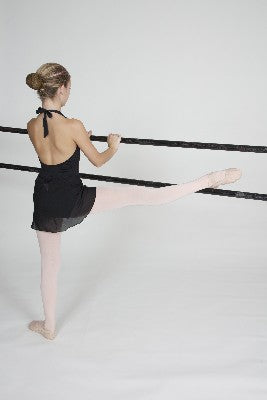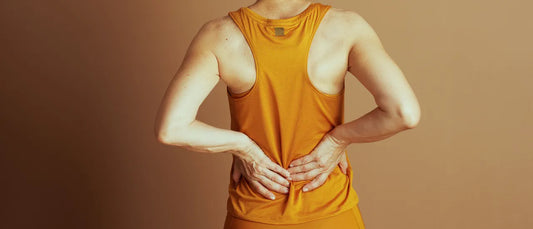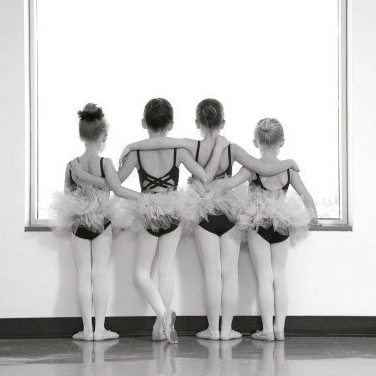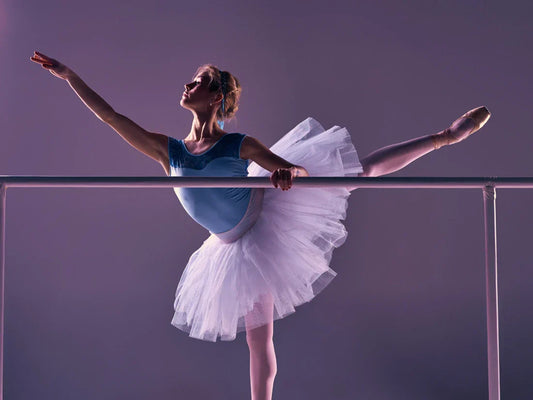The Ballet barre has always been a tool to support dancers in their training. It's there for them to hold onto and maintain balance as they work to improve their posture, alignment, and turn out. Having a freestanding barre in your studio provides more ways for your students to learn and grow. Here are some of our favorite freestanding barre uses:
Make the Most of the Mirror
The mirror is another important tool in teaching dance. It helps students see and correct issues as they practice. With a freestanding barre, you have the versatility to place your barre in whichever way will allow students to benefit most from the mirror. This is especially helpful when training young dancers who should begin their training by facing the barre and holding it with both hands.
Increase Strength and Flexibility
More and more dance studios are incorporating flexibility and conditioning programs into their curriculum with amazing results. These classes and exercises help students build the muscle strength and elasticity that normal class activities can't. A freestanding barre opens the door to a wide range of helpful exercises. For example, to improve back flexibility and increase the height of their arabesque, students can place the lifted arabesque leg on top of the barre while facing away with both hands placed behind them on the barre. From here, they bend and straighten the standing leg to give a gentle stretch to the back.
Improve Petit Allegro
While some students seem to be naturally springy and light on their feet, others can struggle with Petit Allegro movements. These exercises aren't normally done at the barre, but pulling out a freestanding one can actually help students work through these tricky steps. Pushing against the barre with their hands, students can get further off the floor and slow down the movements to really work on closing their fifths and pointing their toes.
Can Your Freestanding Barre Hold its Own?
For a freestanding barre to be effective, it has to be strong. Although students shouldn't grip the barre, they do need to be able to rely on it. You need something that won't wobble or give way while students perform grand battements and pirouettes. A flimsy barre can't possibly hope to do its job of supporting your dancers. Boss Ballet barres are made of structural steel that you can depend on. You can contact us anytime to figure out what product best fits your studio's needs.





